Getting Test Ready? Try Some Retrieval Practice
 By Marilee Sprenger
By Marilee Sprenger
Memory research leads us to a very important insight: not only do we have to help students store information, they also need to be able to retrieve it. And retrieval is no simple matter.
For instance, rereading is a very ineffective way to study material. In fact, research suggests that rereading leads to a false sense of confidence. Students believe that because they recognize information that has been taught to them, they know it. They very often don’t.
How can we help students know they know? Rehearsal and retrieval strategies. To put it simply, rehearsal helps get information in and retrieval helps get it out. Not for the test. Before the test.
The more often information is stored and retrieved, the more students feel comfortable with it. The neuronal connections in the brain are strengthened. (“Neurons that fire together, wire together.”) Let’s start with some scientifically based rehearsal strategies.
Rehearsal Practice
Use Reciprocal Teaching
After the students listen to you explain a concept or idea in a lesson, view a video containing important information, or read text with concepts you want students to remember – not just recall, but deeply store in long-term memory. Put the students into pairs and ask one student to “teach” the other student what they just learned. After the first student shares, his or her partner then has the opportunity to reciprocate.
We’ve been doing this for years; however, since researchers such as John Hattie did a meta-analysis of many strategies and found this one to be highly effective, we can think more seriously about how well and how often we use it.
Make Storytelling a Real Strategy

The emotional content of a story causes the brain to release chemicals which connect us to characters and their journeyss. Whether fact or fiction, an engaging story can embed factual information and concepts that may be otherwise elusive to our students.
Create a Memorable Environment
I’m talking about bulletin boards, posters, music, and even costumes and attire. Students not only remember stories – they remember scenarios the teacher sets up that they are involved in.
I’ve told the story of David, a young boy in my class who I asked to repeat the steps to the water cycle. He stared at me and said, “I can’t tell you.” When I asked why, he said in all seriousness, “because you’re not wearing your red sweater.” I was a bit shocked, but not totally surprised. David learned through the totality of the event. Yes, I was wearing my red sweater the day I taught those steps.
When I asked him to close his eyes and picture me in my read sweater, he did so, and he came up with each step! Some students rely heavily on episodic memory. He needed to feel and see the environment in which he learned.
This is all backed up by research supporting the idea that students test better in the setting in which they learned the material. Over time, as students become more and more facile at transferring information, this dependency is largely overcome.
Recode with an Elevator Speech
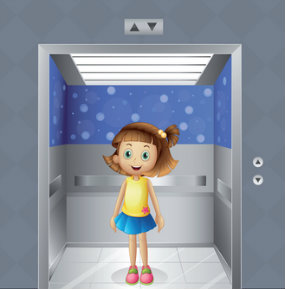
I tell my kids, “You are stuck in an elevator. The School Superintendent is stuck with you. She asks you what you are learning in class. For thirty seconds explain your learning in a cohesive, organized way.” This activity allows the brain to rehearse the information students know, look up what they don’t, and create the 30-second speech.
Brave the Snowstorm
This fun rehearsal involves students writing a vocab word or concept on a white scrap of paper. The papers are scrunched up and upon your signal, the papers are thrown into the air. Each student picks up one of the “snowballs” and upon request reads it aloud and adds to the information via definition, synonym, sentence, or with a concept, an explanation.
Retrieval Practice
Retrieval practice is the act of retrieving learned information and presenting it in some form. It is a strategy that reinforces learning and is not used for grading purposes. All retrieval practices require feedback.
Practice Tests Actually Work
Some teachers believe that practice tests provide students with too much information for the final test. There is also the question of format. Research from the University of Massachusetts and the University of Rhode Island suggests that the format does not matter – students benefit from this type of retrieval practice whether the test is essay or multiple choice.
In my classroom, I often used a multiple choice test for practice. It was simply easier to go over 150 multiple choice tests (# of students I had) and save some hours for reviewing time-consuming essay type questions at the summative assessment stage.
With multiple choice questions, students could check their own or their classmates’ answers during a small or large group discussion. Many students found this approach helpful in clarifying some content.
You can ask students to create a multiple choice or a short answer practice test. They will have a review of the material as they do so. Determining what content is worthy of testing can be challenging to your test-makers and another good retrieval practice for them.
Intersperse Questions Throughout Lessons
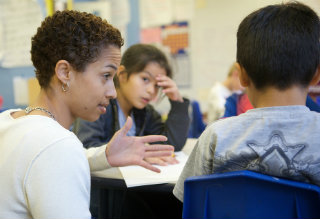
You and your questions become the distraction, rather than tonight’s game, the person sitting next to them, or a text message. And if you tell your students that the questions you ask during presentation time are going to be important enough to show up on the summative assessment, some of your students will increase their attention level.
Adapt the Frayer Model
The Frayer graphic organizer may be used as a retrieval instrument. Students are given the model or asked to make one on their own. Dorothy Frayer and colleagues designed this visual instrument mainly for vocabulary words, but it works with all types of content. (For an editable digital template, visit this Google doc from @jmattmiller and click ‘Make a copy.’)
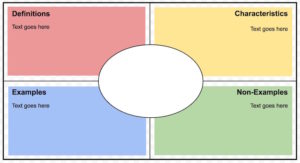
You can change those headings to whatever you want to know, such as “Previous War” for Social Studies, “Inventions Leading Up to This One” for Science, “The Main Character’s Greatest Attributes” for ELA, and “Other Ways to Solve These Types of Problems” for Math.
Talk to…
This may sound silly, but students who tell ANYONE about their content are helping themselves.

These were seventh graders and many would hold the hamster and stroke him while telling him about the Battle of Gettysburg, Chapter Five of The Giver, or how to find the area of a cylinder. Feedback? Have another student listen in and fill in the blanks, if necessary. Students can also check back in their notebooks to make sure they are accurate.
Think, Pair, Share and Switch Partners
An oldie, but a goodie! Throughout a lesson or unit have students find a partner and take turns restating learned concepts. Do more than vocabulary and definitions; encourage them to make connections between new concepts and old ones.
After a few minutes of conversing, have students take four steps in any direction and find a new partner to discuss the content. This is really helpful to those students who don’t quite “get” it; after one partner, they have garnered enough information to feel more confident about talking.
Step Into the Future
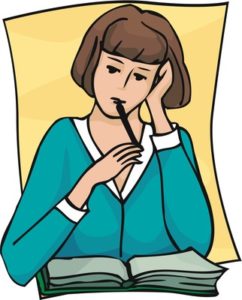
The idea was to retrieve what they felt was important to know five years later, or even longer. I have had students do this activity after many units, lessons, or projects. This is a great retrieval strategy and offers them the opportunity to understand the application of concepts!
Guess the Password
This is similar to the old television game, but everyone in the class has a partner. They are seated so one partner can see the white board or projector screen and the other cannot.
The partner viewing the screen is given a list of words or concepts to explain (but not say) to her partner until he says the correct word or phrase. For instance, if the word analyze is on the screen, the partner might say, “to break down,” “examine carefully,” etc. Once his partner says the correct word, the pair moves on down the list.
You could put a math problem up and have students describe what they see in order to get the partner to tell him the type of problem. I’ve put up the outlines of states and the partner has to describe the state in any way to get the correct response, such as, “the Lone Star state, everything is big there, it has an international border,” etc.
Retrieve Now, Test Later!
Again, retrieval practices should be nonthreatening. No grading allowed. This is practice – formative assessment to prepare for the summative assessment that will come later.
If information can be stored in various areas of the brain by using multiple methods of storage and retrieval, then it is much more likely that it can be retrieved in new and unanticipated situations. And you can reduce the stress of testing by helping your students not just learn it till they get it right, but learn it till they can’t get it wrong!
References
Brown, Roediger, & McDaniel. (2014). Make it stick. Belknap Press.
Sprenger, M. (2018). How to Teach So Students Remember, 2nd Edition. ASCD.
McDermott, K. B., Agarwal, P. K., D’Antonio, L., Roediger, H. L., & McDaniel, M. A. (2014). Both multiple-choice and short-answer quizzes enhance later exam performance in middle and high school classes. Journal of Experimental Psychology: Applied, 20, 3-21.
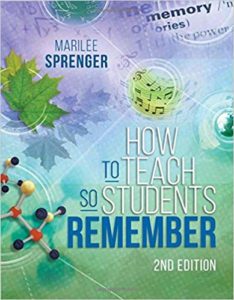
Sprenger is the author of twelve books on the brain and learning. Her most recent books are How to Teach So Students Remember, 2nd Edition (ASCD, 2018) and 101 Strategies to Make Academic Vocabulary Stick (ASCD, 2016). She has written numerous articles and contributed chapters to several publications. See her other MiddleWeb articles here, including her Top 10 post “The 10-Minute Vocabulary Lesson.” You can reach Marilee at (309) 264-5820, her website marileesprenger.com, email brainlady@gmail.com, or on Twitter @MarileeSprenger.





































Loved the information that was presented (supporting research, examples, and experiences). This will be a topic of discussion at our next inservice.